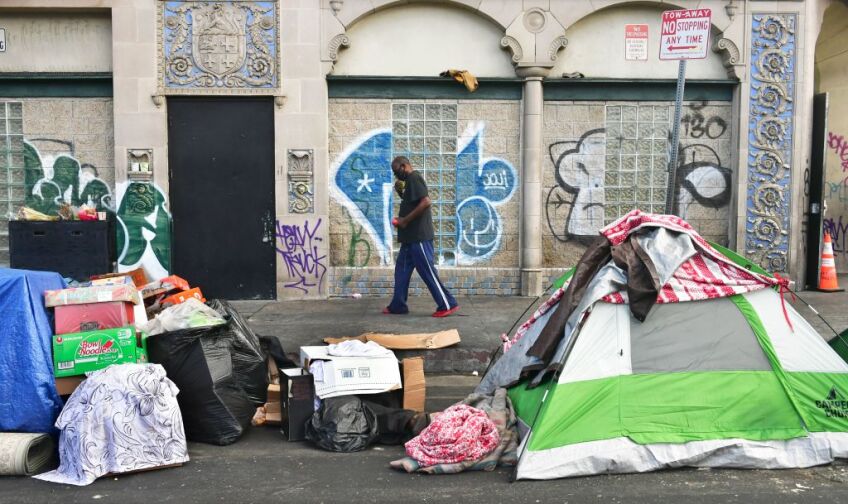Garcetti Signs $11 Billion Budget, with Nearly $1 Billion for Homeless Crisis

LOS ANGELES (CNS) - Mayor Eric Garcetti today signed the city's $11.2 billion budget for the 2021-22 fiscal year, which allocates historic spending of nearly $1 billion to combat Los Angeles' homelessness crisis.
Garcetti proposed the largest spending plan in city history — which includes a $6.6 billion general fund revenue projection — and the City Council unanimously approved it on May 20.
Government spending at all levels inevitably rises because of inflation, expansion of programs and increased population. The budget also includes half of the approximate $1.3 billion the city was allocated through the American Rescue Plan. The city received half of that funding in May, with the second half expected 12 months from now.
Of the American Rescue Plan dollars, the city will spend $151 million on program related to equity and justice, $281 million for homeless services, $244 million to restore city services and $64 million for COVID-19 response and recovery.
"This budget is about more than recovering from a once in a generation crisis — it's about bending the arc of our city's history in the direction of greater equity and justice," said Mayor Garcetti. "This moment demands nothing less than our most courageous efforts to lift up those in need, and this budget charts a course to meeting our highest ambitions, restoring what we've lost, and building on what makes Los Angeles the best city in the world."
Large spending areas within the budget include a total of $955 million to address the city's homelessness crisis, which includes $791 million in the city's budget in addition to carryover state and federal funding from the previous year.
The budget also allocates more than $1.7 billion for the Los Angeles Police Department, a 3% increase from when the City Council cut $150 million from the department's budget last July.
Additional allocations include:
- $62 million to help tourism and hospitality businesses and restaurants, including through the Al Fresco outdoor dining program;
- $33 million toward the Gang Reduction and Youth Development (GRYD)Program;
- $30 million to expand the city's solar energy and electric vehicle charging infrastructure; and
- $29 million for a guaranteed basic income pilot program.
Council President Nury Martinez said that the budget "lays the groundwork for ongoing efforts to address" systemic inequities, and added that "we aren't going to change historic inequities with one step or with one budget, but with this budget we take a step forward towards that."
Councilman Paul Krekorian, chairman of the council's Budget and Finance Committee — which picked apart the mayor's spending plan in a series of hearings leading up to its passage — said following the council's vote last month that the past pandemic year and the preparation of the budget has been "a time like no other for the city, this committee and this council."
"The effort that goes into a budget even in good years, even in more normal times, is immense," he said. "This has been like nothing I have seen in my time on the council."
Council President Nury Martinez acknowledged the vocal calls for social justice programs that permeated the budget discussions, and even the continued opposition to a budget that critics insist funnels too much money to the LAPD.
"In Los Angeles, we face a reality that as much as we are a world-class city, we also have to acknowledge that we have so much more work to do in each and every one of our neighborhoods and for each and every one of our residents," she said. "For us to be a better city, to have a stronger future and for a real opportunity for our families and our kids and our neighborhoods across the city ... we have got to do better by them. And today, we are laying down a foundation brick by brick to be able to get there.
"Systemic change does not happen with one legislative motion or one city budget," Martinez said. "It takes time. And today, I am proud to say that we are going to start on that path forward."




